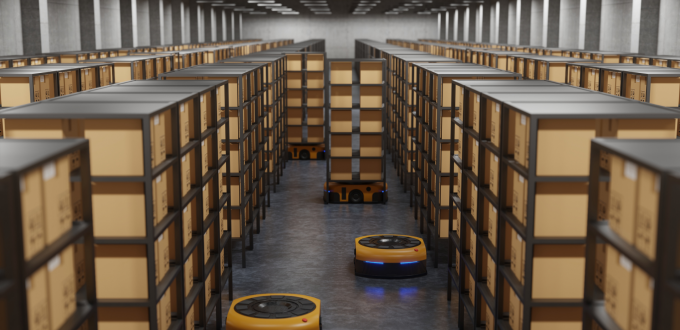In the logistics industry, the availability of automation has been the result of many technological breakthroughs in recent years. Technology is constantly changing the way people do business, and that same technology has been having a big impact on the logistics industry as well. The technologies being used in logistics include automation using robotics, vehicle automation, and inventory management. Globally, it is estimated that the logistics industry ranges from between $8 trillion to $12 trillion per year. Those huge numbers suggest that logistics is a powerful and ever-evolving industry, and it is almost certain that automation will continue to be a big part of it.
Automation in Logistics
The concept of the logistics industry incorporates transport, storage, and inventory; and automation is used to perform tasks within those areas more efficiently. In the past few decades, automation (through a chain of responsibility management software and similar other solutions) appears to have changed the way the entire supply chain works. In fact, the trucking industry experienced the first large-scale use and deployment of automation through the emergence of GPS, which led to the widespread use of Electronic Logs, or ELDs, which track a driver’s service hours.
Organisational control
The use of technology has simplified nearly every other business function. Now, we’re being inundated with intelligent solutions and emerging technologies that promise to revolutionize this vital industry for the better. Automation in logistics holds the promise of improving supply chain visibility and global access to data. If it is a large business, having an efficient data center can automate and manage a lot of company-related data, including the logistics department. So, for complete logistics data control and to access it from anywhere, a business might have to set up a framework for the data center, which can be achieved under the guidance of Walt Coulston (or similar data center experts). By bringing all this information into one place, it’s being analyzed at a base level, which means better communication between various business operations like warehouses, administration, and logistics.
Decrease cost
Logistics is the essential backbone of any industry, and it encompasses multiple processes. The processes included are production, storage, movement, and services. All these processes, if automated, can result in a lot of benefits. One such example is transportation. Transportation demands long delivery times and high transport costs, but with automation, this could be reduced. Other processes that can be automated are warehouse management, supply chain management, inventory planning and management, and material handling. These processes, when done efficiently, can help in significant cost reduction.
Inventory control & stock visibility
Inventory management is a discipline that involves measuring a business’s current inventory of goods, to determine the adequacy of its current stock. Inventory control and stock visibility are the two main functions of inventory management. Inventory control refers to the process of maintaining accurate records regarding the location and quantities of all outstanding inventory, as well as the related manufacturing and purchasing transactions. Stock visibility refers to the ability to monitor inventory on a real-time basis. Often, employees in a particular company will manage that stock and relocate it where necessary. Automation, through lifts or elevators, can be time effective and provide greater control over your inventory and stock visibility, so it’s definitely worth learning all about main sheave bearings.
Better distribution management
Distribution Management is the process of ensuring that all shipments arrive at the correct destination, in the right quantities, and on time. When these attributes are met, the costs associated with errors, delays, returns, and chargebacks are reduced. The benefits of automation in logistics, such as minimising errors, can help companies manage this effectively. While some tasks, such as crating & skidding, warehouse storage, transport of machinery & goods, are still dependent on manual labor provided by the likes of this crating services sparks company (and that’s a good thing), there are many details in the process itself that can be automated to reduce error and make the process more efficient. The reduction in errors (or minimisation of errors) can be achieved by providing employees with more data that is stored in CMS, which will allow them to make more informed decisions.
Improved customer service
The supply chain and logistics industry are constantly evolving, due to the changing behaviour of customers and the dynamic nature of demand. In recent years, online shopping and online businesses have skyrocketed, so automation in logistics goes hand-in-hand with that. With automation, logistics companies are able to improve customer service by fulfilling orders faster and, therefore, providing a better customer experience. Automation also helps logistics companies reduce operational costs, increase accuracy and increase revenues.
Scalability and speed
Automation in logistics helps companies deliver goods at the right time, in the right way, and at the right location. Customers also expect your products to be delivered at the highest quality with a fast turnaround. But how can automation help?
As your customer base grows, getting deliveries to store fast becomes more important than ever. With automation, companies can more quickly process orders, fulfil orders, and ship products, enabling them to deliver on customer expectations of speed and quality. Also, automated warehouses can often demand less warehouse space as fewer staff and operators are required in-store. This can save costs dramatically and means you can scale the business up massively in a relatively compact space.
Conclusion
Automation is an important component of an efficient logistics system because manual logistics systems are often time-consuming, costly, and inefficient. The numerous advantages that can be achieved through automating a warehouse are reduced labor costs, improved inventory management, improved accuracy and consistency in processes, and increased productivity, all of which contribute to overall efficiency.


No Comments Yet